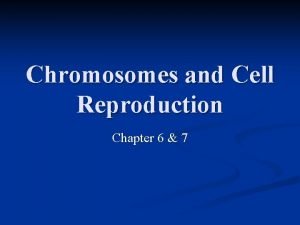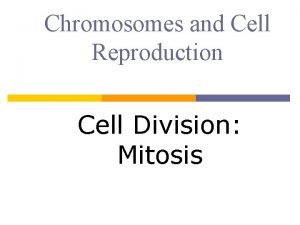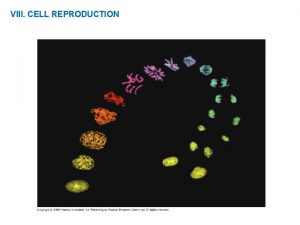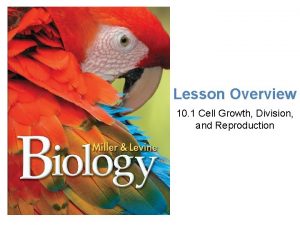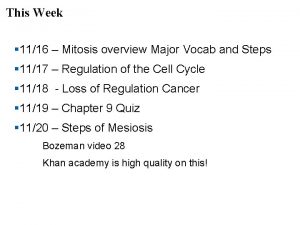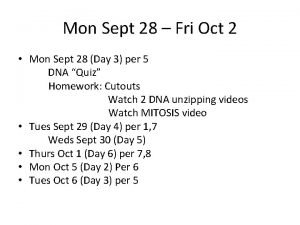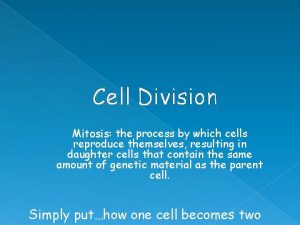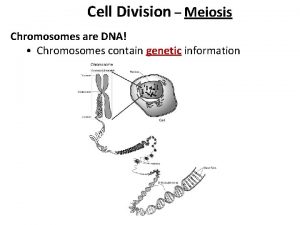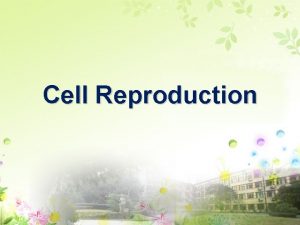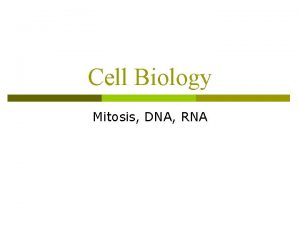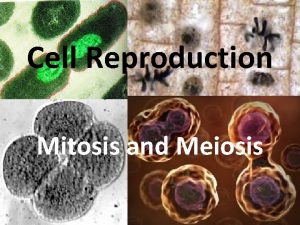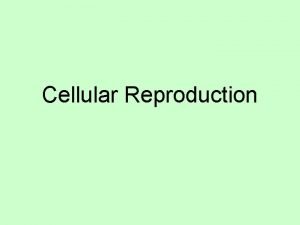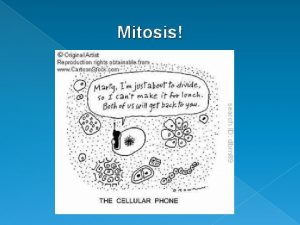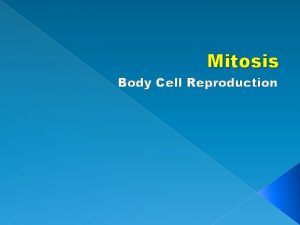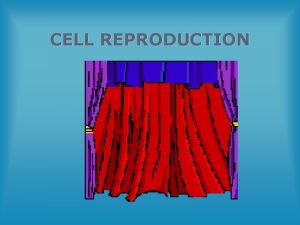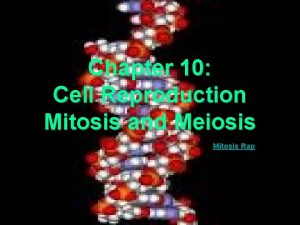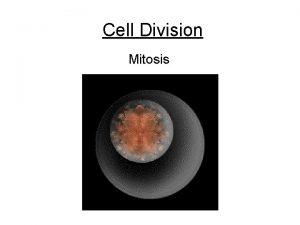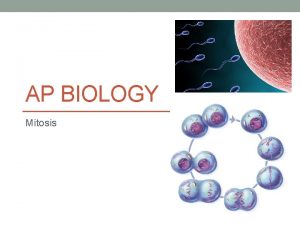Chapter 4 Cell Reproduction Mitosis Mitosis is the














- Slides: 14

Chapter 4 Cell Reproduction

Mitosis • Mitosis is the process in which the nucleus divides to form two identical nuclei. • Each of the two nuclei contains the same number and type of chromosomes as the original. • The parent cell then undergoes division.

Mitosis

Division of Cells 10: 45

Asexual Reproduction • New organisms are produced from one parent. • Offspring produced from asexual reproduction have DNA that is identical to the DNA of the parent organism

Examples of Asexual Reproduction in Plants

Examples of Asexual Reproduction in Animals Hydra Planaria

Sexual Reproduction and Meiosis • A new organism is produced when sex cells from two parents combine. • The sex cell from the male is the sperm. • The sex cell from the female is the egg. • A human body cell has 46 chromosomes. • Human sex cells have 23 chromosomes.

DNA • The chromosomes in the nucleus of a cell contain a code. This code is in the form of a chemical called deoxyribonucleic acid, or DNA. • DNA controls the activities of cells with coded instructions.

History of DNA • Scientist Rosalind Franklin discovered that the DNA molecule was a strand of molecules in a spiral form. • In 1953, scientists James Watson and Francis Crick made a model of a DNA molecule.


Mutations • Any permanent change in a gene or chromosome of a cell is called a mutation. • Many mutations are harmful to organisms. • Some mutations do not appear to have any effect on the organism.

Mutations

Cloning Video (3: 19)
 Sexual reproduction vs asexual reproduction venn diagram
Sexual reproduction vs asexual reproduction venn diagram Asexualk
Asexualk Venn diagram of asexual and sexual
Venn diagram of asexual and sexual Chapter 6 chromosomes and cell reproduction
Chapter 6 chromosomes and cell reproduction Mitosis sexual reproduction
Mitosis sexual reproduction Cell reproduction
Cell reproduction Cell of reproduction
Cell of reproduction Cell reproduction
Cell reproduction Cell growth division and reproduction
Cell growth division and reproduction Handwriting คือ
Handwriting คือ The scientist mathias schleiden studied _______ in ______.
The scientist mathias schleiden studied _______ in ______. Onion cell mitosis labeled
Onion cell mitosis labeled How do you know
How do you know Mitosis and meiosis
Mitosis and meiosis Crossing over meiosis
Crossing over meiosis



